Customer Satisfaction Score (CSAT)

Suppose you were staying at the Burj Al Arab in Dubai, I mean where else, and at the end of your visit you receive an email like this asking you how satisfied you were with your stay.
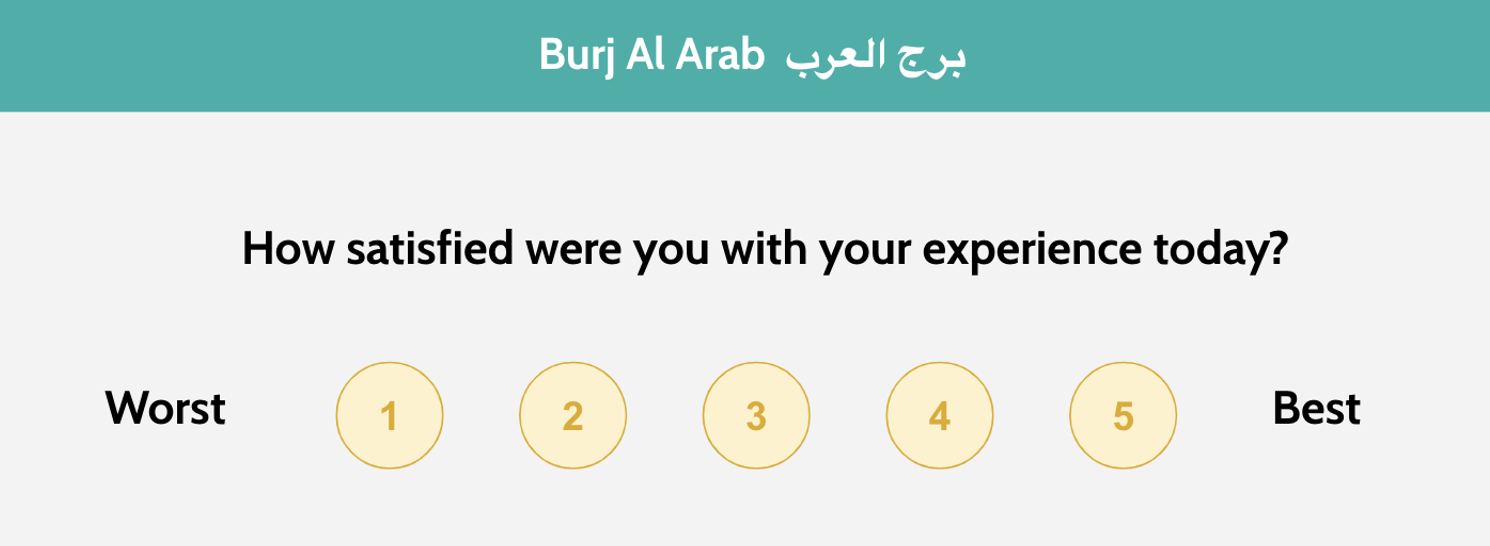
I am sure you have been asked many times to fill out a questionnaire similar to this one. This is a typical CSAT question, and the reason you have been asked to vote on your experience is that companies want to get a sense of your satisfaction.
The Burj Al Arab wants to know if you are happy, mainly for two reasons. Firstly, they do not want to lose you as a customer and secondly, happy customers spend more money. A study published in the Harvard Business Review found that customers who gave their experiences the highest ratings spent an average of 140% more than customers who gave their experiences the lowest ratings.
So it is easy to understand why CSAT results are an important metric for any business. Satisfied customers buy more, stay longer and share their positive experiences with others.
CSAT is the most straightforward customer success metric. And you can measure your customer satisfaction for:
-
Either your business itself.
-
A purchase of a specific product. So after the purchase, you could simply ask a customer if they were satisfied with the purchase process, or you could ask several questions about price, website navigation, and delivery time, and ask the customer to rate each of these questions with one to five stars.
-
Or really any kind of interaction. For example, an on- boarding process: After a customer has completed the on- boarding process to see how efficient it was and if any improvements are needed. Or a training course that you have conducted. You might ask: “How do you think your training went? Did you get what you needed? Do you feel comfortable and ready to use the product? If not, we can ask customers for feedback on how we can do better”.
Examples for CSAT questions
As shown, you are not limited to one question. Let’s look at some examples of companies that you know:
Uber

How was your ride with David? Does David deserve 5 stars because his air freshener reminded you of your stay at the Burj Al Arab?
Or does he only get 4 out of 5 stars? If so, you can see that Uber is asking you follow-up questions right away: Was it because of his navigation skills? Did he miss the pickup location? Or did he not snail his driving abilities?

After a WhatsApp call, the app asks about the quality of your call and gives you the
opportunity to provide additional feedback. Although in this case you can see the disadvantage of an open question compared to a closed question, you can choose between several options. I’m not sure to what extent this answer will help Whats App to improve its service.
Hilton hotel
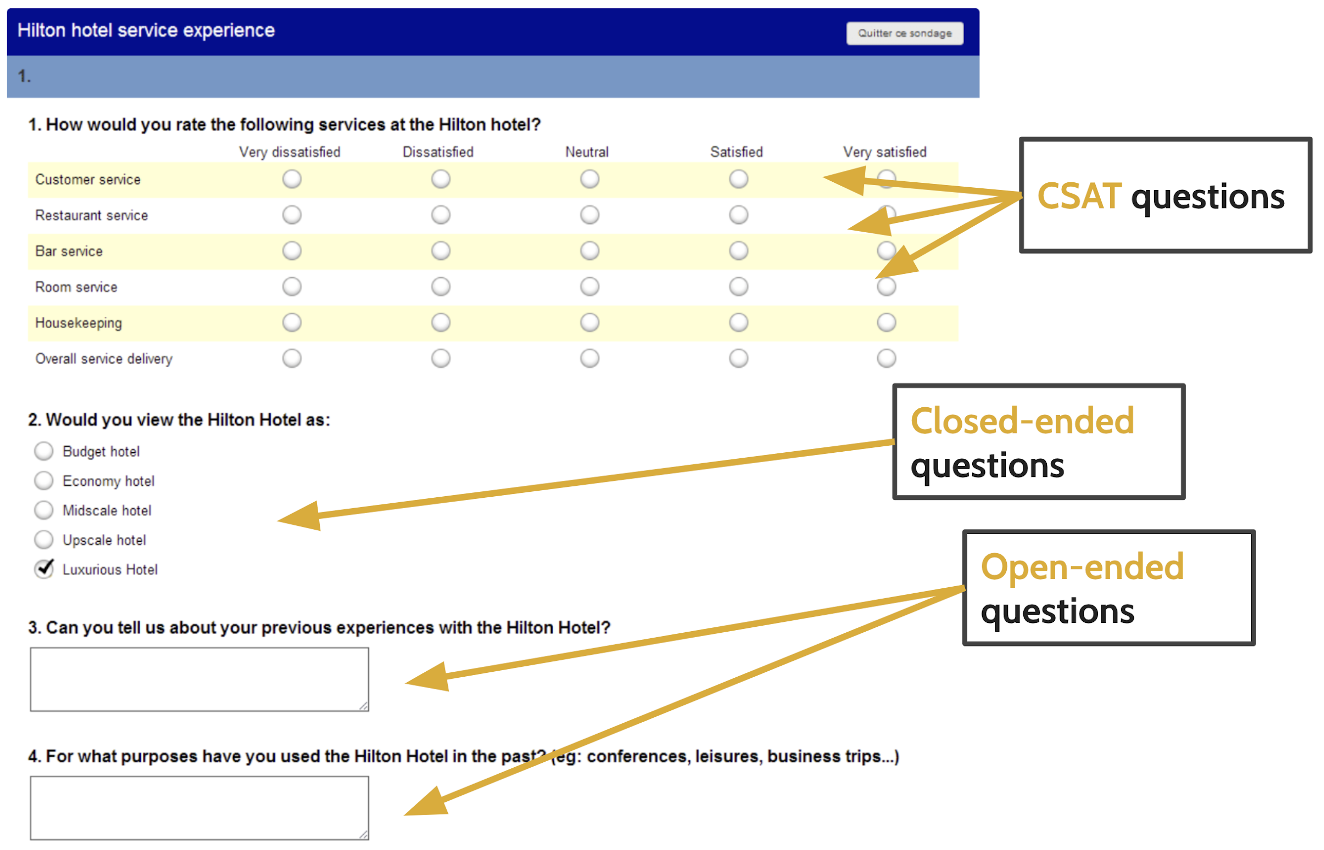
As mentioned above, a CSAT questionnaire can contain several questions, as this survey from the Hilton chain provides. Above we see several CSAT questions that relate to customer service, restaurant service, room service and general service delivery. This is followed by a closed question about the hotel category and two open questions about your experience and the purpose of your stay.
Calculation CSAT
So how does the rating for CSAT work? Is it a rating of 0 – 5? Or 1 -10?
The reality is – it does not matter. Respondents can even rate their satisfaction with text answers on a range of “very satisfied” to “very unsatisfied”.
As long as you have some form of weighted scale, you can calculate your satisfaction score. How would we do that for the CSAT?
The CSAT score is an average score based on the results of the survey. People generally use percentages – from 0% to 100%. The cleanest way to calculate the score is to take the sum of all scores and then divide it by the sum of the maximum possible score. Then multiply it by 100 to get the percentage. What do I mean by the sum of all scores and the sum of the maximum possible score?
For better understanding let’s take a peek at my KPI calculator.
Calculation of the CSAT
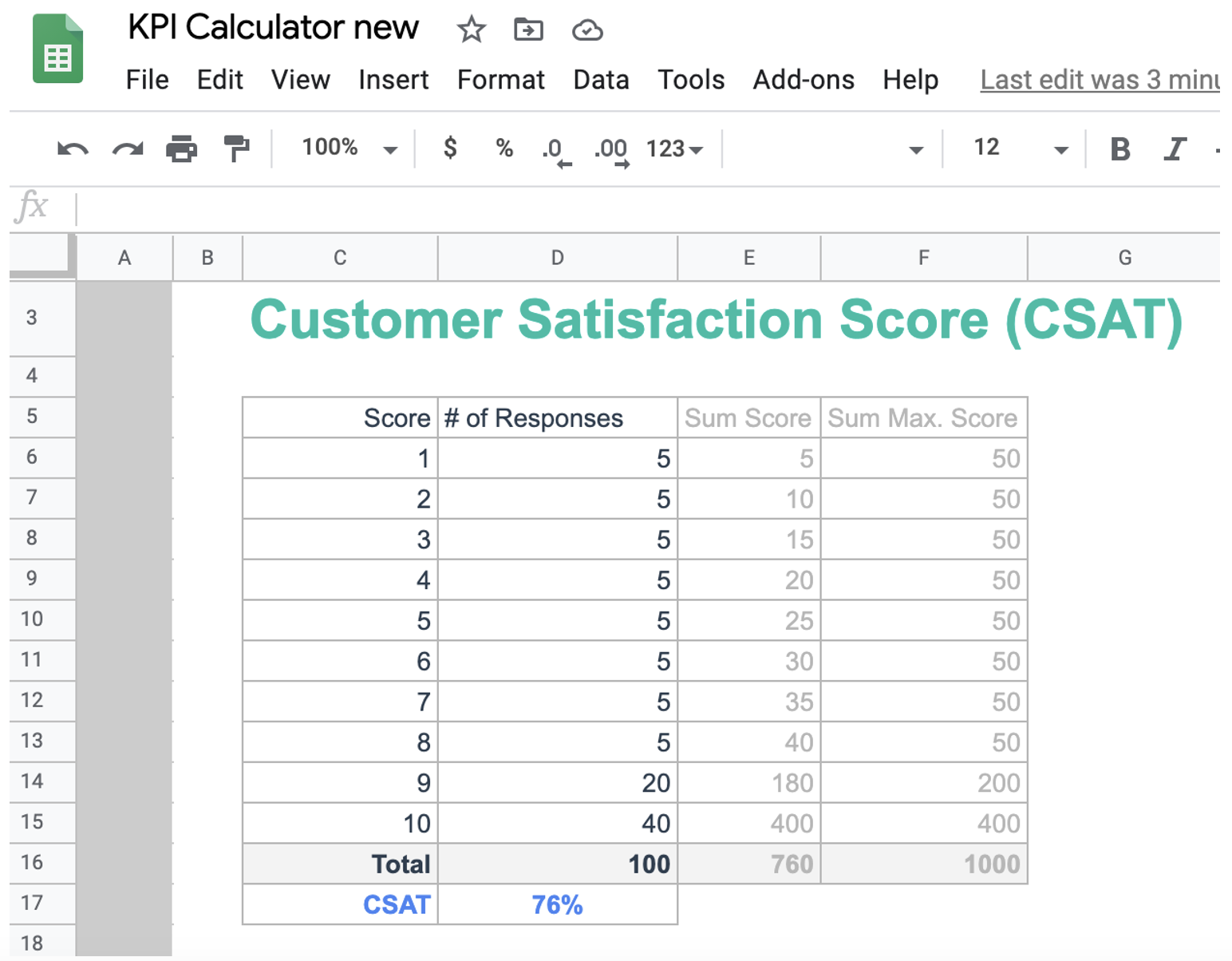
What we see here are the results of a survey. In this case the satisfaction ranges from 1 – very dissatisfied to 10 – very satisfied. In the next column you can see how many respondents voted for each result.
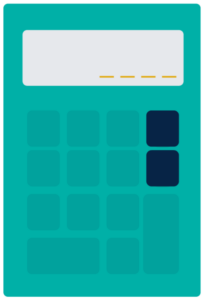
FREE SALES METRICS CALCULATOR
KPI Calculator
To get the sum of the score, we multiply each point by the number of answers. We have 5 respondents who chose 1, which is a sum of 5. In addition 5 respondents voted with a score of 2, which is a sum of 10, and so on. In this case we end up with 760 for the sum of all points.
In order to get the sum of the maximum possible score that could have been achieved in this survey, we multiply 10 (the highest score) by the number of all respondents. This survey was filled out by 100 people. 10 times 100 is a maximum score of 1000.

Our total score of 760 divided by a maximum possible score of 1000, times 100, results in a Customer Satisfaction Score of 76%.
By the way, if the highest score of this survey is a 5, just delete the second half of the table and the calculation will work the same way. Simply the sum of all scores divided by the sum of the maximum possible score.
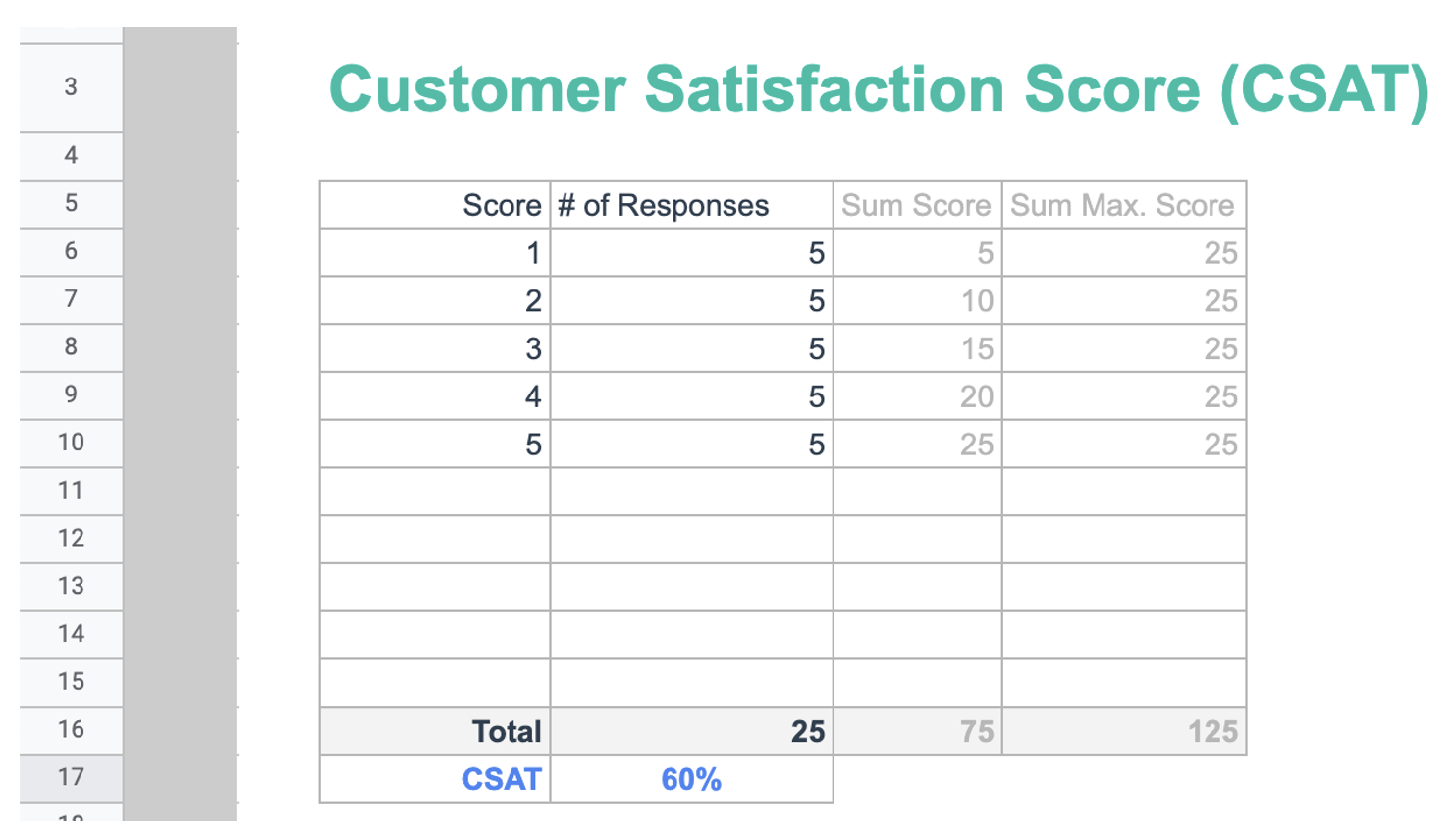
CSAT Chart
Similar to what we have learned about NPS you can use CSAT either relational over time or transactional after an interaction with your service. This graph shows my CSAT over the months of January to June.

You could even go one step further and measure your customer satisfaction over the entire customer life cycle. Think of it as a pulse check. The average customer lifecycle could correlate with their dissatisfaction, and this chart illustrates where you need to intervene.
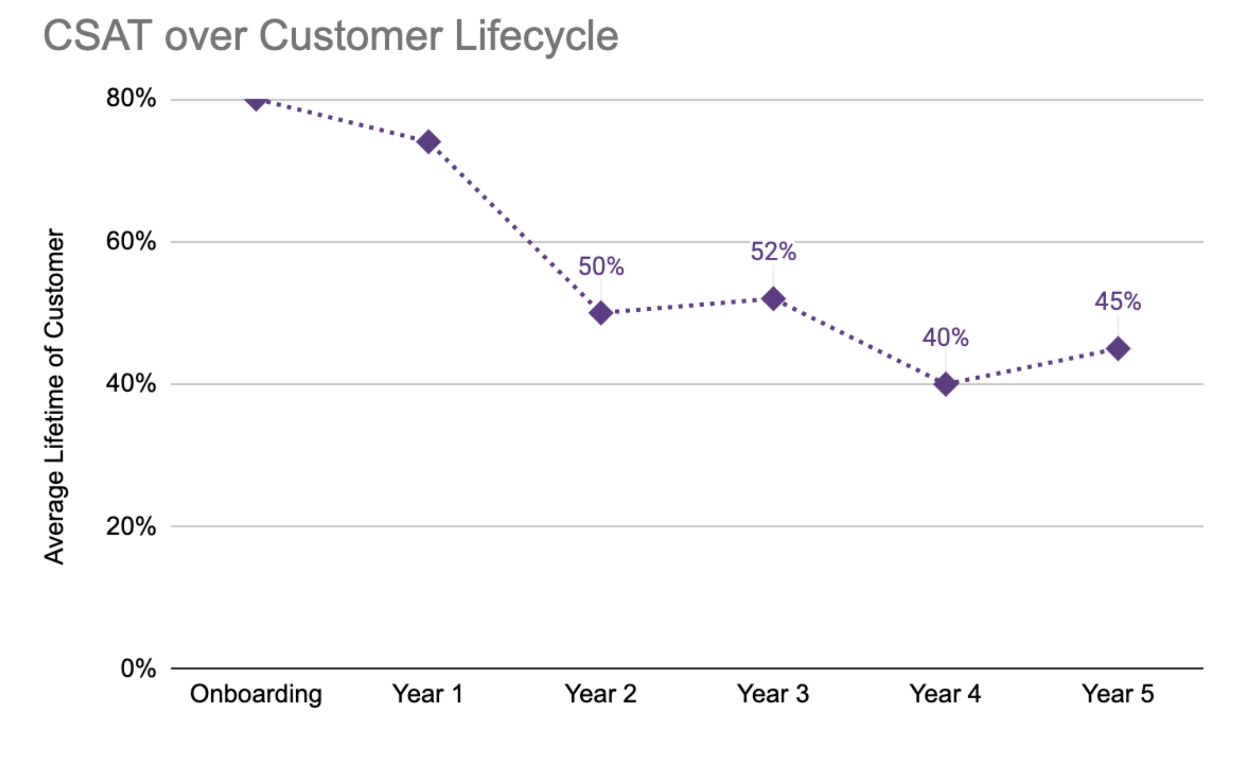
A closer look at your CSAT can give you a good oversight of your operations. This dashboard shows different regions such as North America and Europe and their respective satisfaction scores for on-board experience, ongoing support and overall product satisfaction.
You can even combine these insights with the overall Net Promoter Score. In this particular example, we found that the low NPS score for the Asia region is probably due to a poor customer support experience.
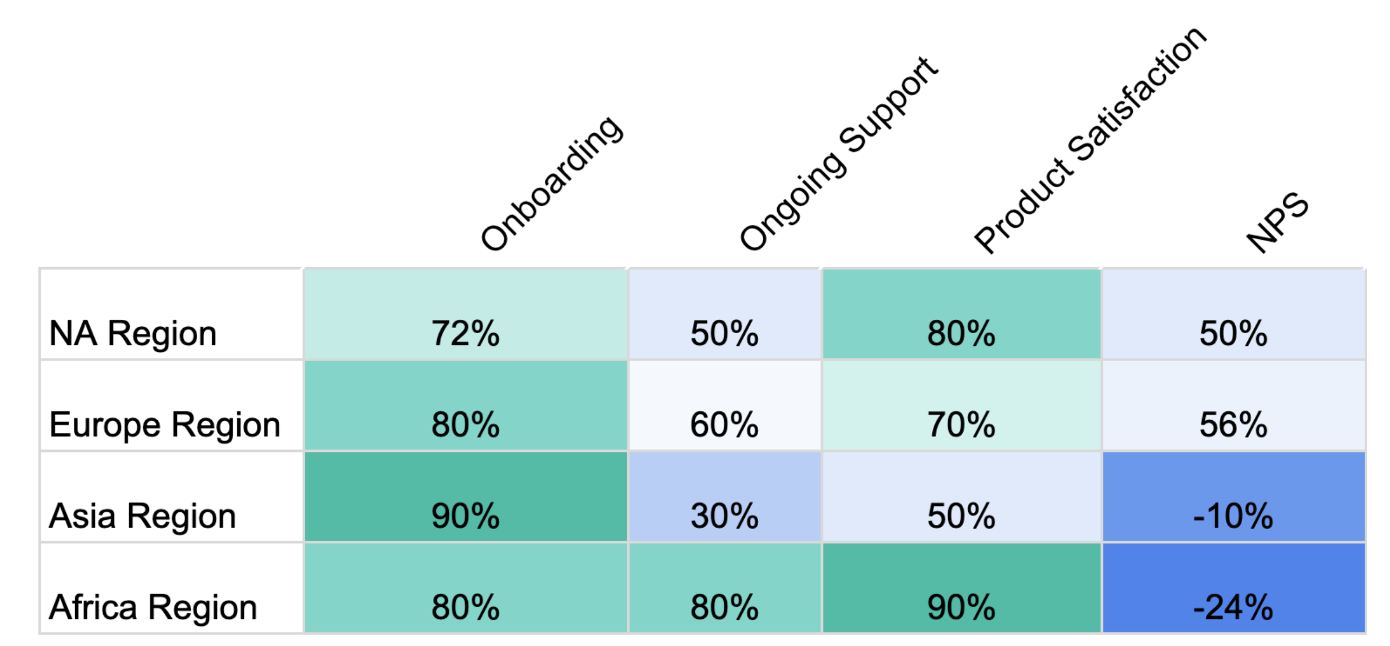
Summary
CSAT is the most straightforward of all customer service KPIs. It is versatile, flexible, easy to implement and the calculation is fairly simple. Everyone in your business will understand it.
CSAT has several applications: You can use it to measure satisfaction with your business, a purchase or interaction (e.g. on-boarding experience, training or customer support).
Because CSAT surveys are mostly sent out after specific interactions, survey results can help you to pinpoint specific issues across the business. You can narrow down the problem by combining your CSAT survey with close-ended and open-ended questions.
You are flexible with your scale, whether it is 0 to 5, 1 to 10, or dissatisfied to satisfied, it does not matter. In your calculation you simply take the sum of all scores and divide it by the sum of the maximum possible score.
You can use CSAT transactionally or relationally as a pulse check over time and you can create powerful dashboards for different regions and themes and even use the Net Promoter Score.
Of course collecting these surveys is only the first step, you have to act on the feedback in the next step. Negative feedback is almost like a support ticket. You have to solve the customer’s problem to keep the customers from churning. It is always cheaper to retain a customer than acquiring new ones. And on top of that, with happy customers you will have a raging crowd promoting your services for free.
Thank you so much for reading. The next episode will look at one last customer metric: The Customer Effort Score